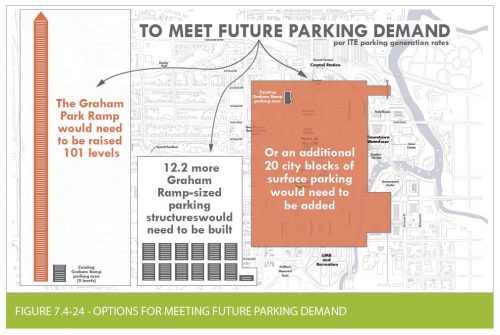salsa
Senior Member
I'm shocked that a city as big as Atlanta would have most of its shops closed on the weekends. In every major city I've been in, the weekends are pretty big shopping days. Especially in Toronto, where on the weekends the streets are overflowing with pedestrian traffic.
It's shocking until you visit a number of different cities, and soon enough you realize that that's the norm in America. My dad was in Dallas a few years ago for a business conference, and he said the downtown completely shuts down as soon as everyone drives home after work to the suburbs where they live. He described it as if a nuclear bomb went off and killed all the people. After hours he was the only pedestrian left on the street, aside from maybe two other people he saw. The reason for that is simple: no one lives in downtown. America's idea of a downtown is a lot different than ours. Instead of it being the centre of culture and entertainment as well as a place to live and work, it's just a central business district with maybe a couple of tourist attractions thrown in. In other words, downtown Dallas (like so many others) is basically just a vertical business park. There is nothing to do there and no reason to be there unless it's for work or there's a game happening. Therefore the place behaves exactly like any business park you see in Vaughan or Mississauga: plenty of people during the day, then they all disappear by evening, nothing happens on weekends. All the shopping and entertainment you describe is done in the suburbs inside shopping malls such as this one:
In Atlanta's case, Buckhead is the real downtown. "You want something to do, just drive to Buckhead" as they say. Although that name sounds more like an Ohio hick town to me.
Amazingly, even the streetlife in downtown Los Angeles (a much bigger city than Toronto) was unimpressive. I visited on a Monday afternoon - a time when plenty of people should have been there - and here's what it looked like:
I felt the city was heavily racially segregated when I visited a few years ago. This definitely manifests itself on the MARTA. It made me quite a bit uncomfortable.
MARTA is really self segregated. My friend who lives there (well, just outside the city now) was shocked when his coworkers were shocked when he took MARTA when he first moved there.
There's a well known acronym for MARTA: Moving Africans Rapidly Through Atlanta
Attachments
-
 Screen shot 2015-08-19 at 1.36.28 PM.png1.2 MB · Views: 1,455
Screen shot 2015-08-19 at 1.36.28 PM.png1.2 MB · Views: 1,455 -
 Screen shot 2015-08-19 at 1.36.40 PM.png1.2 MB · Views: 1,456
Screen shot 2015-08-19 at 1.36.40 PM.png1.2 MB · Views: 1,456 -
 Screen shot 2015-08-19 at 1.36.49 PM.png1.1 MB · Views: 1,492
Screen shot 2015-08-19 at 1.36.49 PM.png1.1 MB · Views: 1,492 -
 Screen shot 2015-08-19 at 1.37.01 PM.png1.1 MB · Views: 1,371
Screen shot 2015-08-19 at 1.37.01 PM.png1.1 MB · Views: 1,371 -
 Screen shot 2015-08-19 at 1.55.22 PM.png1.2 MB · Views: 1,471
Screen shot 2015-08-19 at 1.55.22 PM.png1.2 MB · Views: 1,471


















